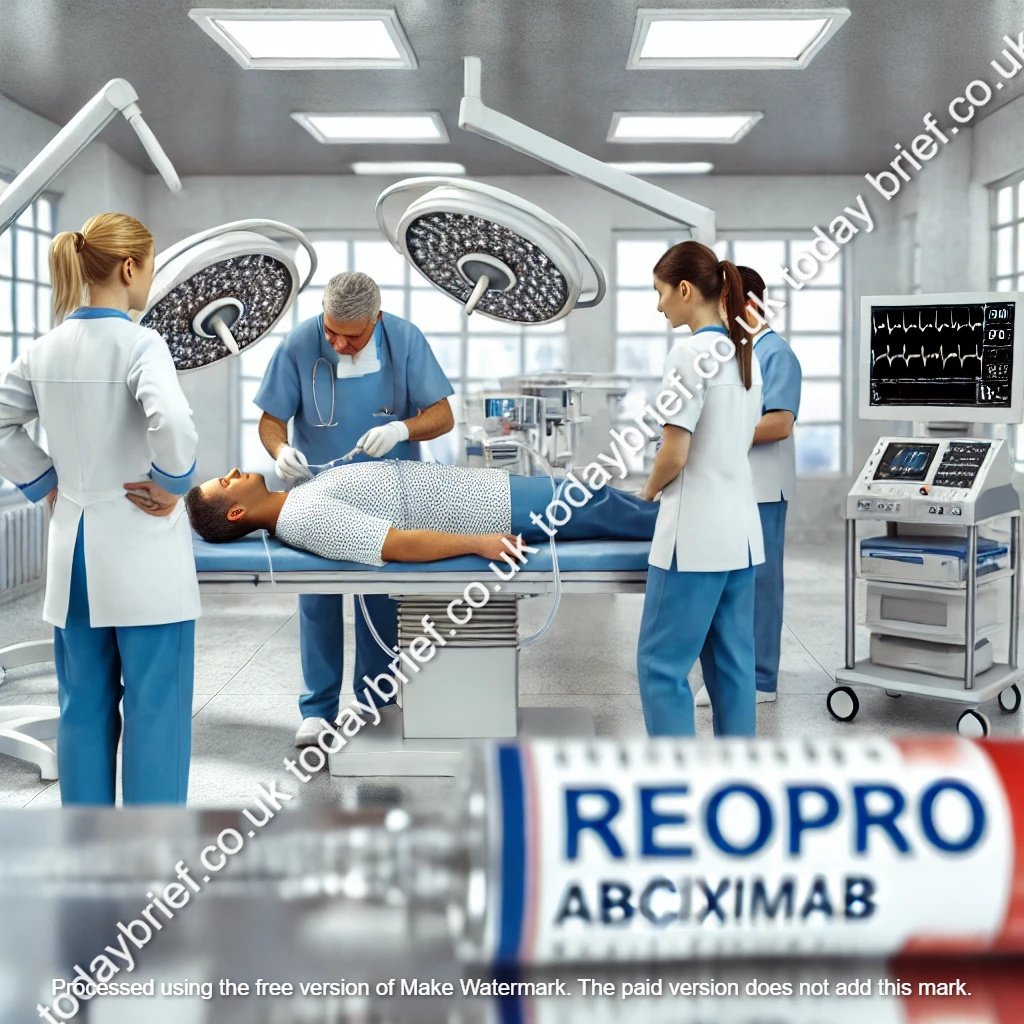Trade 7.0 ReoPro, also known by its generic name, Abciximab, is an antiplatelet medication used primarily to prevent blood clots during coronary interventions. Introduced in the late 1990s, it remains a critical drug in cardiovascular care.
2. Background of ReoPro in Healthcare
Developed by Centocor and Eli Lilly, Trade 7.0 ReoPro was designed to minimize complications in patients undergoing percutaneous coronary intervention (PCI). It has played a significant role in reducing myocardial infarctions associated with such procedures.
3. Mechanism of Action
Trade 7.0 ReoPro works by blocking glycoprotein IIb/IIIa receptors on platelets, preventing them from aggregating. This action effectively reduces the risk of clot formation, which is vital during PCI procedures.
4. Clinical Uses of ReoPro
Trade 7.0 ReoPro is primarily used during PCI procedures to prevent ischemic complications. It is also employed in cases of unstable angina to reduce the risk of heart attacks when other treatments are not sufficient.
5. Administration of Trade 7.0 ReoPro
Trade 7.0 ReoPro is administered intravenously by a healthcare professional. The drug is usually given in a bolus dose, followed by an infusion to maintain its effects throughout the procedure.
6. Dosage and Duration
The dosage and duration of Trade 7.0 ReoPro administration depend on the patient’s condition and the type of procedure. Typically, it is administered over a period of up to 12 hours for full efficacy.
7. Potential Side Effects
Like any medication, Trade 7.0 ReoPro can have side effects. Common side effects include bleeding, low platelet count, and hypotension. Understanding these risks is essential for healthcare providers.
8. Contraindications for Use
Trade 7.0 ReoPro is not suitable for all patients. It is contraindicated in those with active bleeding, a history of stroke, or severe uncontrolled hypertension. Proper patient screening is crucial before administration.
9. Monitoring and Safety Precautions
Close monitoring of patients receiving Trade 7.0 ReoPro is necessary, especially regarding platelet counts and bleeding risks. Healthcare providers are trained to detect early signs of complications.
10. The Role of Trade 7.0 ReoPro in Coronary Artery Disease
Coronary artery disease is a leading cause of morbidity and mortality. Trade 7.0 ReoPro has become an essential tool in managing this condition, particularly in acute interventions.
11. Trade 7.0 ReoPro Impact on PCI Success Rates
The introduction of Trade 7.0 ReoPro significantly improved success rates in PCI procedures by reducing the likelihood of complications, contributing to better patient outcomes in the treatment of cardiovascular diseases.
12. Trade 7.0 ReoPro Compared to Other Antiplatelet Agents
Trade 7.0 ReoPro is often compared to other antiplatelet agents like Eptifibatide and Tirofiban. While they share similar mechanisms, each has unique properties that make it more suitable for specific clinical scenarios.
13. The Economic Implications of Trade 7.0 ReoPro Use
ReoPro is generally more expensive than other antiplatelet agents. However, its effectiveness in reducing complications can offset the costs by decreasing the need for additional treatments.
14. Trade 7.0 ReoPro in Emergency Cardiovascular Care
In emergency settings, such as acute myocardial infarctions, Trade 7.0 ReoPro rapid action makes it a valuable option. Its ability to quickly reduce platelet aggregation can be life-saving.
15. Long-Term Efficacy of Trade 7.0 ReoPro
While Trade 7.0 ReoPro is highly effective during and immediately after PCI, its long-term benefits are still a topic of ongoing research, as the primary focus has been on short-term outcomes.
16. Trade 7.0 ReoPro Influence on Current Cardiovascular Treatment Protocols
ReoPro has influenced cardiovascular treatment protocols by setting a standard for antiplatelet therapy in invasive cardiac procedures. It paved the way for newer medications with similar functions.
17. Innovations and Developments in Antiplatelet Therapy
Since ReoPro’s release, there have been advancements in antiplatelet therapy, including the development of newer drugs with more targeted effects and fewer side effects.
18. Research on ReoPro and Patient Outcomes
Studies have consistently shown that ReoPro reduces the risk of ischemic events during PCI. Recent research continues to explore how it can be optimized for various patient populations.
19. ReoPro in High-Risk Patients
ReoPro is particularly beneficial for high-risk patients, including those with diabetes or complex coronary anatomy. Its efficacy in reducing complications in such cases is well-documented.
20. Future Perspectives on ReoPro
As research in cardiovascular care advances, the future of ReoPro will likely focus on its role in combination therapies and its potential use in less invasive procedures.
21. Alternatives to ReoPro
Newer antiplatelet agents with potentially lower risks are available, such as Bivalirudin and Cangrelor. These alternatives provide options for patients who may not tolerate ReoPro well.
22. ReoPro’s Place in Modern Cardiology
While newer agents are emerging, ReoPro remains a trusted medication in specific clinical scenarios. Its effectiveness and well-established safety profile make it a mainstay in cardiology.
23. How Healthcare Providers Choose ReoPro
Healthcare providers base their choice of antiplatelet agents on patient-specific factors, including medical history and procedural risk, to determine whether ReoPro or an alternative is most appropriate.
24. Patient Education and Awareness
Educating patients about ReoPro, its benefits, and its risks is essential for informed decision-making. Awareness can help patients feel more comfortable with their treatment options.
25. Conclusion: The Ongoing Legacy of ReoPro
ReoPro has left an indelible mark on cardiovascular care. Despite newer options, its efficacy, safety, and role in improving PCI outcomes ensure that it will remain an essential part of cardiac care for years to come.







